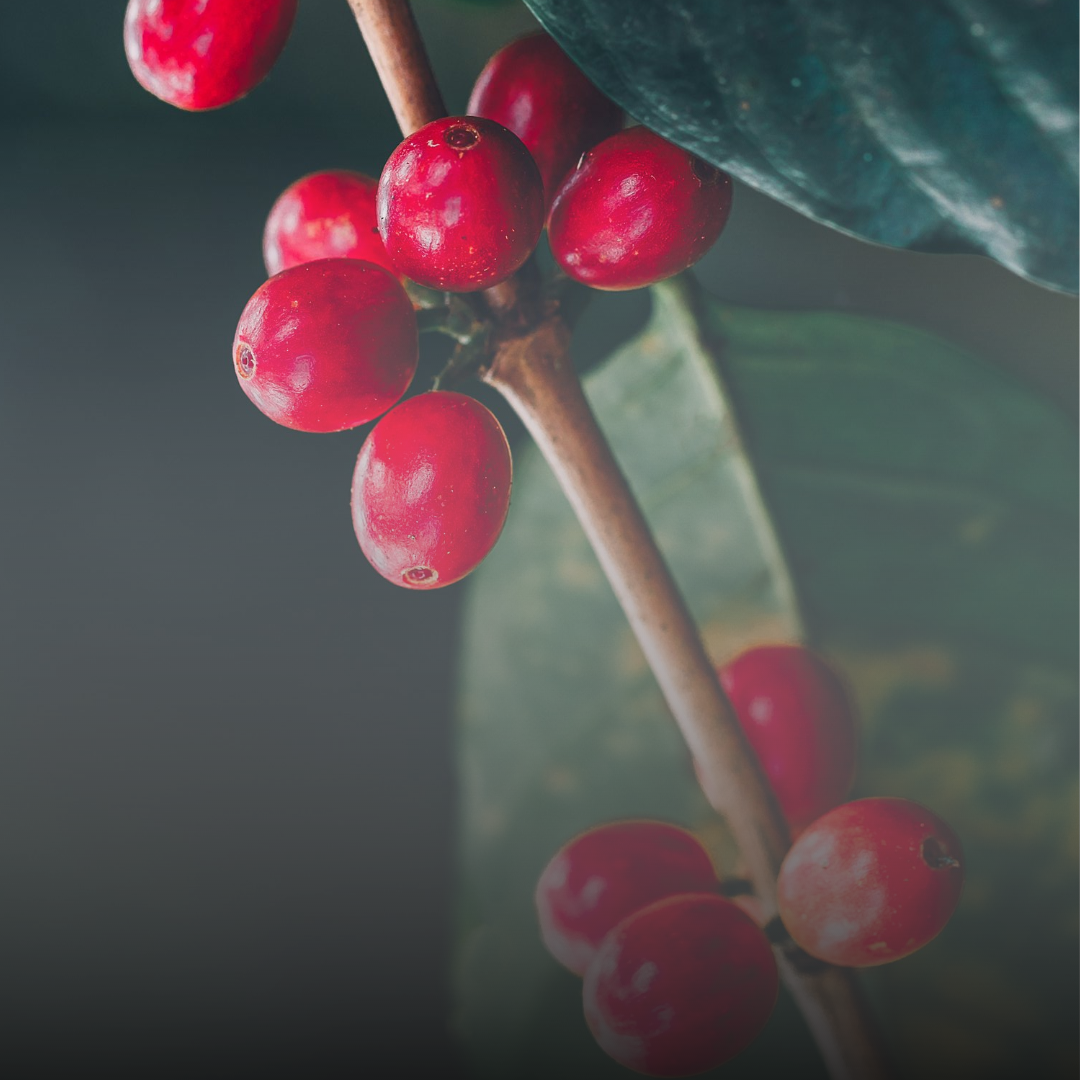Specialty Coffee: A Complete Guide 2022 (In Simple Terms)

Introduction: What is Specialty Coffee?
There's a trend nowadays of people adding "specialty" or "craft" in front of their product/brand name to make it sound fancier. Is your double-coffee-half-caf half latte with coconut milk a craft latte? Well, then it must be fancy, right? However, specialty coffee is different.
We all love coffee, whether it’s a morning shot of espresso or a warm mug to enjoy on the couch while we binge-watch Netflix. But what is this stuff we love so much? That’s the big mystery. Coffee is one of those drinks that you know and love but have no idea how it's made or what it actually is. We know it gets us going in the morning, keeps us awake when doing that assignment you forgot about, and tastes better than pretty much anything we can get at the corner store. But there has to be more to it than that… so what separates “specialty coffee” from just any coffee?
Hint: It's not just another buzzword for something made by someone passionate about coffee.
In essence, the concept was quite simple: special geographic microclimates produce beans with unique flavours, which is what Erna Knutsen, referred to as ‘specialty coffees' in a speech to the delegates of an international coffee conference in Montreuil, France, in 1978.
Underlying was the premise that specialty coffee beans would always be freshly roasted and carefully brewed to enhance their origin-based flavours. This was the craft of the specialty coffee industry that had been slowly evolving over the past the twenty-years since Erna's speech.
This origin-based focus brought us to single estate and single origin coffees that essentially are batches of coffee from just one specific estate or region respectively. These coffees will have unique flavours which they absorb from the environment it is grown in, they will be rarer due to limited supplies, they are then very carefully processed and highly trained roasters working on ensuring the perfect roast profiles.
What are the Types of Coffee Processes?
So once your coffee is harvested at the estate, it is put through one of the following processes
Natural Process -

A natural processed coffee a.k.a dry-processed, is a traditional way to process coffee today. Dating back to ancient Ethiopia, it involves drying out the entire freshly picked coffee cherry with the seed still inside. To do this, coffee producers take the cherries and place them on drying beds under the sun. These beds either are mostly patios or raised tables.
The coffees will then be left to ferment, for a course of 3-6 weeks, as they are raked these rotated to prevent spoiling. During this time, the sugars and mucilage (that sticky substance that coats the seed) will be absorbed onto the seeds to some extent, which develops sweeter and bright flavours. Once it is dried, a machine is used to separate the pulp and the skin from the seed.
Natural coffees, like our Nikola, result in coffees with great and dense bodies, with sweet and complex undertones due to that time spent developing extra flavours. This development comes from the way that the seeds ferment differently since they dry with the full cherry still intact. Natural processed coffees can be difficult to replicate because as we know fermentation is a natural process due to which there it has a certain element of randomness involved.
However, if done right, it can also be a way to prepare some of the sweetest specialty coffees you'll ever taste. Natural processed coffee deliver a bright, syrupy mouthfeel and are well worth the extra effort in our eyes.
Washed Process -

Unlike natural or dry-processed coffees, washed processed coffees are ideally the opposite i.e. wet-processed! In this scenario, machines called de-pulpers are used to remove the seeds from the cherries before drying. These cherries must have the perfectly ripe to make sure they have enough sweetness, and are sorted for density. Once the skin and pulp from the seeds has been removed by the de-pulpers, the seeds are put into large water tanks. The water washes out any remaining mucilage and fruit from the seed. Once this is complete, the seeds are finally ready to go onto beds in the sun to dry out.
Wet processed coffees, like our Da Vinci Single Origin, have clean & crisp tasting notes when compared to natural processed coffees. The body of a brewed washed coffee is lighter. There is typically more cleaner flavour profiles that balances out the sweetness of the coffee. The flavour notes will be easier to differentiate in a washed coffee as this process is aimed at focusing on the innate flavours to coffee brings and thus making it one of the more preferred methods while processing specialty coffees.
Honey Process -

This method was developed as a hybrid method between washed and natural processes to reduce the burden on farmers in the dryer coffee growing regions in Africa and South America, but it has rapidly made a name for itself in the specialty coffee segment by creating very complex and enjoyable coffees. It’s a unique and tedious method, and thus not as commonly practised as washed or natural processes.
During honey processing, a de-pulper is used to remove the seed from the cherry before it drying it. However, after this, it is not washed in the water tank and thus has a certain amount of fruit/mucilage caked on it. That mucilage, which is what is referred to as “honey”. The amount of mucilage left behind dictates the sweetness that the seeds will hold on to. The seed then is dried on the beds, while being raked and rotated to avoid any mould formation.
Honey coffees are quite interesting and produce intriguing flavour profiles as they have the cleaner bodies of washed coffees, and the sweetness of natural coffees. Honey processed coffees have a pronounced acidity. They honey process is further divided into the duration the coffee is left to dry and how often are the beans rotated (i.e. what's the difference between black honey and red honey?).

What are the Types of Roasts Available?
After your coffee has been harvested and processed it is then ready to be roasted and this is where we come in. At Caffena we follow fair trade practices and purchase directly from the farmers to support the community.
Now once we get the coffees our team of Italian trained experts work closely at our roastery to experiment with multiple roast profiles on the coffee samples we receive to define recipes to ensure that we can consistently deliver a fantastic cup every time. On our website, you will encounter three different roast profiles. Which we roast freshly every week to protect the flavours while they are shipped to delight taste-buds across the country!
Filter Roast (Light Roast)
The coffee is roasted to a lower end temperature and for shorter periods of time. It, therefore, creates a clearer picture of a coffee's innate taste as there is far less “roast” flavour interfering. Creates a sweeter cup of coffee (the coffee is less caramelized)
Our filter roast Nikola is a unique natural processed coffee from Biota Estate in Coorg. An experience defining coffee to electrify your day with floral and nutty undertones.
The specialty coffee boom has mostly focused on lighter roast profiles as they don’t roast the coffee enough to alter the origin-based flavours of the coffee which are necessarily the key to creating the unique flavours which you observe in specialty coffees.
Medium Roast
Medium Roast coffees are brown and have a little thicker body than a Light Roast. Unlike Light, Medium starts to take on a bit of the taste from the roasting process, losing some of the bright floral flavours that are typical of a Light Roast. Instead, they carry much more of a balanced flavour with a medium amount of caffeine. A Medium is roasted until just before the second crack, usually at about 410º–440º. Other roasters refer to a Medium as American Roast, Breakfast Roast, or City Roast.
Our Newton, Single Origin, is a smooth Medium-Dark coffee roasted ever so slightly more to bring in some chocolatey hints to go with the fruity notes of this fantastic coffee from the Chandragiri region, Karnataka.
Dark Roast
Dark Roast coffees have a dark brown shade. The beans are at the extreme can be characterised by drawn-out oil to the surface which makes them very glossy. Dark Roasted coffees have a robust, dense body. The flavours from the coffee’s origin are roasted out, taking on a very bold chocolatey and smoky taste.
To be considered Dark, beans roast to a temperature of anything higher than 440º or essentially the end of the second crack. If beans roast much hotter than 465º, the coffee will start to taste more and more ashy. Purchasing a Dark Roast can be tricky due to numerous names that have been shared in this roast profile. Some include French Roast, Italian Roast, New Orleans Roast, or even Espresso Roast.
We take deep pride in our team to have managed to balance the innate flavours that the Baba Budangiri region bestowed upon our single-origin, Da Vinci (Dark Roast).
Conclusion
Once this whole process is complete we pack your freshly roasted coffee into nitrogen sealed bags to minimize any oxidation that could alter the taste of the coffee.
If you’ve wondered about specialty coffee in the past, we hope this guide has helped you understand what exactly makes specialty coffee so special. Also, it might be time for you to give it a try. The key takeaway from this article is that specialty coffee has a lot to offer, but you should look it with an open mind and not be afraid to experiment. The more you learn about quality coffee, the more opportunities you have to enjoy it in various ways.
For starters, we would recommend you to try Nikola which is our flagship Light roast and is perfect to kick ahead your journey into the vast world of Specialty Coffee. Which you can brew with the Timemore French Press to enjoy a clean and well-brewed cup.


